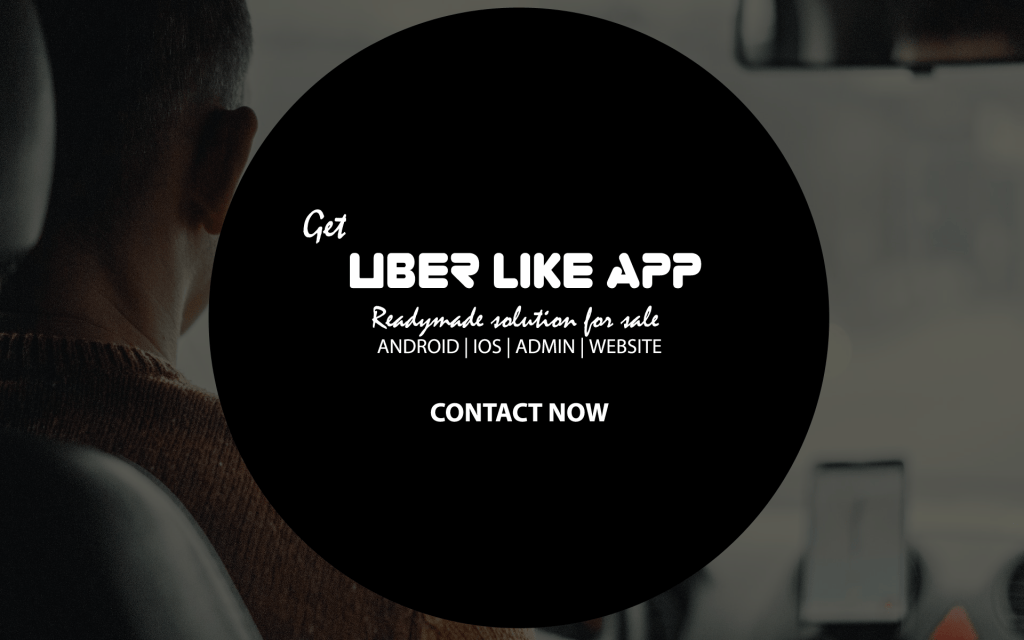Introduction: launch your own italian online food store
Starting an Italian Online Food Store can be a rewarding and profitable business venture. With the right planning, products, website, and marketing strategies, you can build a successful online store that satisfies your customers’ cravings for delicious Italian cuisine. if you have a passion for Italian cuisine and a good understanding of e-commerce. Here are some steps to get you started:
- Research and Planning: Before launching your Italian online food store, you need to do some research and planning. Look at what other similar businesses are doing, and identify what sets you apart from them. Consider your target audience, your product range, and your pricing strategy.
- Choose Your Products: Decide on what kind of Italian food products you want to sell on your online store. Italian cuisine has a vast range of products, from pasta and sauces to cheese and wine. It’s important to choose products that are authentic and of high quality.
- Source Your Products: Once you have identified your products, you need to source them. Consider reaching out to Italian food suppliers and wholesalers, attending food trade shows, or even visiting Italy to find the best products.
- Build Your Website: Your website is the backbone of your online store. Consider hiring a web developer to help you create a professional-looking website that’s easy to navigate and user-friendly. You’ll also need to set up an e-commerce platform and payment gateway to process orders.
- Marketing: Once your website is up and running, you need to market your store to attract customers. Use social media platforms, email marketing, and other online marketing strategies to reach your target audience. Consider offering discounts and promotions to incentivize customers to shop with you.
- Fulfill Orders: Once orders start coming in, you need to fulfill them promptly and efficiently. Consider using a third-party logistics provider to help you manage inventory and shipping.
- Customer Service: Providing excellent customer service is crucial for the success of your Italian online food store. Respond to customer queries promptly and professionally, and address any issues or complaints promptly.
Launch Your Own Italian Online Food Store in 5 Easy Steps
- Conceptualization and Planning:
- Define Objectives: Clearly outline the purpose of the app – whether it’s for ordering, reservations, menu browsing, or a combination of services.
- Target Audience: Identify your target customers and their preferences to tailor the app’s features and design.
- Feature List: List the essential features such as menu display, online ordering, table reservations, reviews, loyalty programs, and any unique functionalities.
- User Experience (UX) Design: Craft a user-friendly interface that prioritizes ease of navigation and provides a seamless experience.
- Development and Prototyping:
- Select Technology: Choose the appropriate platform (iOS, Android, or both) and technology stack (programming languages, frameworks) for your app.
- Create Wireframes and Prototypes: Develop wireframes and interactive prototypes to visualize the app’s layout, user flows, and functionalities before actual development begins.
- Backend Development:
- Database Design: Design a robust database structure to store user profiles, menu items, orders, reservations, and other relevant information.
- API Development: Develop APIs for seamless communication between the app’s frontend and backend systems.
- Integration: Integrate third-party services for payment gateways, push notifications, and analytics.
- Frontend Development:
- User Interface (UI) Design: Design visually appealing screens that reflect your restaurant’s brand identity while ensuring an intuitive and consistent user experience.
- App Development: Develop the frontend components of the app, including menu displays, order processing, reservation forms, and user profiles.
- Testing, Deployment, and Launch:
- Testing Phase: Conduct thorough testing to identify and fix any bugs, glitches, or usability issues. Test the app on different devices and screen sizes to ensure compatibility.
- App Deployment: Deploy the app to the respective app stores (App Store, Google Play) following their guidelines and protocols.
- Launch and Marketing: Plan a strategic launch, promoting the app to your existing customer base through social media, email campaigns, and in-restaurant promotion.
Remember, successful restaurant app development extends beyond these steps. Continuous updates, gathering user feedback, and adapting to changing customer preferences will help your restaurant app thrive in the competitive digital landscape.
Before open italian restaurent what should we know?
Before opening an Italian Online Food Store, there are several important things to consider. Here are some key points to keep in mind:
- Knowledge of Italian cuisine: To open an Italian Online Food Store, you should have a good understanding of Italian cuisine, including traditional dishes, regional variations, and cooking techniques. You should also be aware of the ingredients and flavors that are commonly used in Italian cooking.
- Business Plan: Before opening a restaurant, it is important to create a solid business plan that outlines your goals, strategies, and financial projections. This will help you stay focused and organized as you move forward with your venture.
- Location: Choosing the right location is crucial for the success of your Italian restaurant. Look for a location with high foot traffic, good visibility, and easy access for customers. Consider the surrounding neighborhood, competition, and parking availability.
- Menu and Pricing: Your menu should offer a range of authentic Italian dishes that appeal to a variety of tastes and preferences. Consider offering daily specials, seasonal ingredients, and vegan or gluten-free options to attract a diverse customer base. Pricing should be competitive with other local Italian restaurants.
- Staffing: Hire a skilled and experienced team of chefs, servers, and bartenders who are passionate about Italian cuisine and provide excellent customer service. Train them well and establish clear expectations and standards for their work.
- Licensing and permits: Before opening your Italian Online Food Store, you will need to obtain the necessary licenses and permits from your local government. This includes health and safety permits, liquor licenses, and zoning approvals.
- Marketing: Develop a marketing plan to promote your restaurant through social media, online directories, and local advertising. Consider offering promotions, hosting events, and partnering with other local businesses to attract new customers.
What are the legal formalities to open italian restaurent
The legal formalities required to open an Italian restaurant may vary depending on your location and the specific regulations in your area. However, some common legal formalities that may be required include:
- Business registration: You will need to register your restaurant as a legal entity with your local government. This may involve registering for a business license, sales tax permit, and employer identification number.
- Permits and licenses: You will need to obtain various permits and licenses from your local government, such as a food service permit, health department permit, and liquor license if you plan to serve alcohol.
- Zoning and building permits: You may need to obtain zoning and building permits to ensure that your restaurant complies with local building codes and zoning regulations.
- Employment and labor laws: You will need to comply with employment and labor laws, such as minimum wage requirements and workplace safety regulations.
- Insurance: You may need to obtain various types of insurance, such as liability insurance, property insurance, and workers’ compensation insurance, to protect your business and employees.
- Contracts and agreements: You may need to create contracts and agreements, such as leases, vendor agreements, and employment contracts, to formalize relationships with suppliers, employees, and other stakeholders.
- Intellectual property: You may need to register trademarks or copyrights for your restaurant’s name, logo, or menu items to protect your intellectual property.
How to make food reservation app?
Creating a food reservation app can be a challenging but rewarding venture. By following these steps and working with a team of skilled developers, designers, and business experts, you can create an app that connects users with their favorite restaurants and enhances their dining experience.
Creating a food reservation app can be a complex process that requires a combination of technical skills and business knowledge. Here are some steps to consider when developing a food reservation app:
- Define your app’s objectives: Determine what your app will offer, such as reservations for Italian cuisine, location-based restaurant suggestions, or reviews and ratings.
- Choose the platform: Decide which platform you will use to create your app. Some options include native app development for iOS or Android, web-based apps, or hybrid solutions that work across multiple platforms.
- Develop a business plan: Create a business plan that outlines your target market, pricing model, revenue streams, and marketing strategies.
- Design the user interface: Design a user-friendly interface that allows users to easily find restaurants, view menus, make reservations, and leave feedback.
- Develop the app: Develop the app using programming languages such as Swift for iOS or Java for Android. You may also use software development tools like React Native or Flutter for a cross-platform app.
- Integrate APIs: Integrate APIs (Application Programming Interfaces) for various features such as location-based search, restaurant menus, and online payment systems.
- Test the app: Test the app thoroughly to ensure that it is user-friendly, bug-free, and functions as intended.
- Launch the app: Launch your app on the app stores, and market it through social media, email marketing, and other online marketing channels.
- Monitor and improve: Continuously monitor user feedback, and make improvements to the app based on user feedback, trends, and analytics.
Cost of investement to start italian food restaurent?
The cost of investment to start an Italian food restaurant can vary depending on several factors such as location, size of the restaurant, quality of equipment and furnishings, menu offerings, staffing, and marketing expenses. Here are some potential costs to consider:
- Real estate and leasehold improvements: The cost of renting or buying a space for your restaurant, as well as any necessary renovations or improvements to the space, such as flooring, lighting, plumbing, and electrical work. This cost can range from a few thousand dollars for a small space to several hundred thousand dollars for a larger, more upscale location.
- Kitchen equipment and supplies: The cost of purchasing or leasing high-quality kitchen equipment, such as ovens, stoves, refrigerators, and dishwashers, as well as smaller supplies such as utensils, plates, and glassware. This cost can range from $50,000 to $150,000, depending on the size and complexity of your kitchen.
- Furniture and decor: The cost of furnishing your restaurant with tables, chairs, lighting, decorations, and other design elements to create an inviting atmosphere. This cost can range from a few thousand dollars for a simple, casual restaurant to over $100,000 for a more upscale, elegant establishment.
- Licensing and permits: The cost of obtaining various licenses and permits, such as a business license, food service permit, liquor license, and zoning permits. This cost can range from a few hundred to several thousand dollars, depending on the requirements in your area.
- Inventory and food supplies: The cost of purchasing initial inventory and supplies, such as food, beverages, and other ingredients. This cost can vary greatly depending on the size of your menu and the quality of your ingredients, but typically ranges from $10,000 to $30,000 for a small to medium-sized restaurant.
- Marketing and advertising: The cost of promoting your restaurant through various marketing channels, such as social media, email marketing, and print advertising. This cost can range from a few thousand dollars to tens of thousands of dollars, depending on the scope of your marketing campaign.
- Staffing and training: The cost of hiring and training staff, such as chefs, servers, and bartenders, as well as any necessary training programs or employee benefits. This cost can range from a few thousand dollars to tens of thousands of dollars, depending on the size of your staff and the level of training required.
Frequently Asked Questions – Italian Online Food Store Development
- How can I initiate the development of an Italian Online Food Store?
Getting started is simple. Reach out to our development team through the provided contact channels. They’ll guide you through the initial steps to launch your Italian culinary venture. - What information is needed to kick off the development process?
To create a customized online food store, we require details about your store’s offerings, design preferences, user experience expectations, and any unique functionalities you wish to include. - Is an upfront payment or deposit required for store development?
Yes, typically, an upfront payment or deposit is required to initiate the development process. Our team will provide you with transparent instructions regarding the payment process. - Can I make changes to the store’s specifications after confirming the order?
Certainly! We understand that concepts can evolve. We’re flexible and can accommodate reasonable changes. However, significant alterations may influence the project timeline and costs. - What occurs after I confirm my order for store development?Once your order is confirmed and the initial payment is made, our skilled development team will start crafting your Italian Online Food Store. Throughout the journey, we’ll keep you in the loop about the progress.
- When does the store development process commence after order confirmation?
The timeline for commencing development varies based on project complexity and our current workload. Our team will provide you with an estimated start date once your order is confirmed. - How will communication be maintained during the development process?
We use various communication channels including emails, calls, and project management tools to keep you informed about the development progress and promptly address any inquiries. - Can I provide feedback during the development process?
Absolutely! Your insights are invaluable. We encourage your active participation and feedback throughout the development process. Regular updates and feedback loops ensure your store aligns with your vision. - Will there be project milestones or checkpoints during development?
Yes, we establish milestones and checkpoints to track progress. These milestones offer opportunities for you to review and assess the store’s development stages. - What occurs once the store development is complete and ready for launch?
After completing store development, we conduct thorough testing and quality assurance. Upon your approval, we guide you through the deployment and launch process. Your Italian Online Food Store will be ready to tantalize taste buds!
These FAQs are your companion, addressing queries and aiding in making the most of your Italian Online Food Store’s development. We’re here to ensure a seamless and delightful journey towards creating an innovative culinary digital experience.
Please read our other articles:
Conclusion:
In conclusion, starting an Italian restaurant can be a lucrative business opportunity, but it also requires a significant investment of time and money. Legal formalities such as obtaining the necessary licenses and permits must be addressed, as well as the cost of equipment, furniture, and inventory. Additionally, marketing and staffing expenses must be considered. Overall, the cost of starting an Italian restaurant can vary greatly depending on location, size, and other factors, but typically ranges from $100,000 to $500,000 or more.
It is important to create a detailed budget and seek financing or investment to cover the costs of starting and operating your restaurant. Overall, the cost of investment to start an Italian food restaurant can range from $100,000 to $500,000 or more, depending on the specific needs and requirements of your business. It is important to create a detailed budget and obtain financing or investment to cover the costs of starting your restaurant.
Got an app idea..? What to develop app restaurent delivery app?





